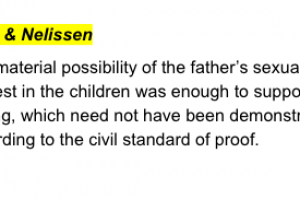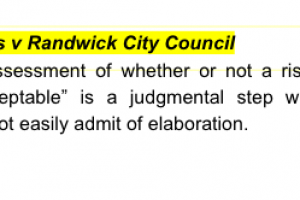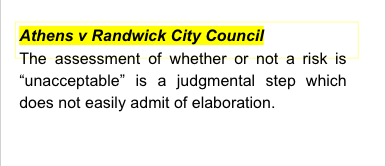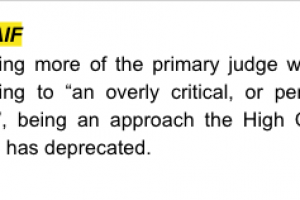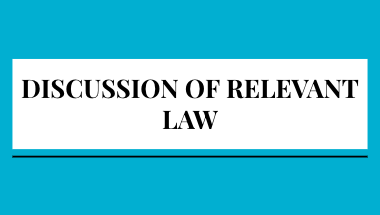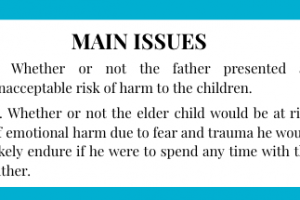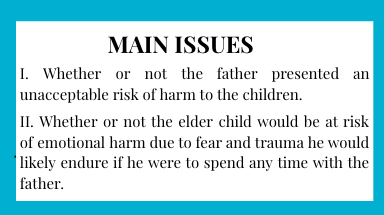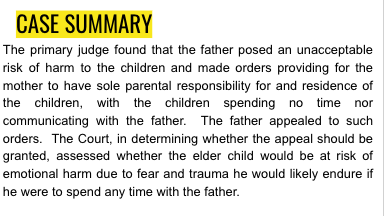- · 4846 friends
Father Appeals decision that he is an unacceptable risk of harm to the children and should have no time with them.

Eastley & Eastley [2022] FedCFamC1A 101 (8 July 2022)
The primary judge found that the father posed an unacceptable risk of harm to the children and made orders providing for the mother to have sole parental responsibility for and residence of the children, with the children spending no time nor communicating with the father. The father appealed to such orders. The Court, in determining whether the appeal should be granted, assessed whether the elder child would be at risk of emotional harm due to fear and trauma he would likely endure if he were to spend any time with the father.

Facts:
The parties commenced cohabitation in 2011, married in 2013 and finally separated in 2020. The two children were born in 2017 and 2019. They were respectively aged four and two years at the time the trial concluded and the appealed orders were later pronounced. At or about the time of separation, the mother formed the view the father had sexually abused the elder child and so withheld both children from him.
The father commenced proceedings seeking parenting orders under Pt VII of the Family Law Act 1975 (Cth) a month later in August 2020. In September 2020, the proceedings were transferred to the Family Court of Australia from the Federal Circuit Court of Australia (as the courts were then known). In December 2020, the primary judge made interim orders providing for the children to live with the mother and for only the younger child to spend supervised time with the father. However, those orders were only implemented for about six weeks.
The mother ceased compliance when informed by the supervisor that the father had experienced penile erection when with the younger child, which the father denied. The father made no attempt to enforce the orders after January 2021. As a consequence, the younger child spent no time with the father after January 2021, though the elder child spent no time with the father after the marital separation in July 2020, other than when they were interviewed together by a single expert psychologist in November 2020. The primary judge made orders providing for the mother to have sole parental responsibility for the children and for them to live with her.
The orders directed that the children would not spend any time nor communicate with the father and restrained him from approaching or contacting the children until they attain their majority. The father’s elimination from the children’s lives followed upon findings made by the primary judge that he poses an unacceptable risk of harm to them.

Issues:
I. Whether or not the father presented an unacceptable risk of harm to the children.
II. Whether or not the elder child would be at risk of emotional harm due to fear and trauma he would likely endure if he were to spend any time with the father.

Applicable law:
AMS v AIF (1999) 199 CLR 160; [1999] HCA 26 - provides that demanding more of the primary judge would be descending to “an overly critical, or pernickety, analysis”, being an approach the High Court of Australia has deprecated.


Analysis:
The parties’ evidence revealed a multitude of factual discrepancies, many of which were specifically addressed by the primary judge in the reasons for judgment, some without any positive or negative finding being made. Importantly though, the primary judge was not required by law to definitively resolve even the pivotal factual disputes when assessing the risk of harm within the wider context of the discretionary determination of the particular orders which would best promote the children’s interests.
The possibility of the children’s sexual abuse by the father was plainly evident from the reasons for judgment. The primary judge did not need to “evaluate” or rate the possibility by any numerical standard, but rather only determine whether or not the risk was “unacceptable”, which his Honour duly did.
The reasons explained how the finding of unacceptable risk flowed from an accumulation of facts and circumstances. The father admitted massaging the elder child’s testicles. The father admitted making comments and engaging in conduct, described as sexualised, in the children’s presence. The elder child had potential trauma from spending time with the father.
There could be no error in abstaining from making a definitive factual finding when the primary judge explained why he was not convinced on the balance of probabilities the incident occurred as the maternal grandmother alleged. However, the primary judge’s enduring suspicion of the incident might have occurred as the maternal grandmother alleged was still legitimately available to take into account as part of the matrix of evidence upon which the finding of “unacceptable risk” was premised. It is well accepted that an accumulation of factors, not individually proven on the balance of probabilities, can still be enough to demonstrate the existence of an unacceptable risk of harm to children.
Conclusion:
The appeal is dismissed. The appellant shall pay the respondent’s costs of and incidental to the appeal fixed in the sum of $41,555.


